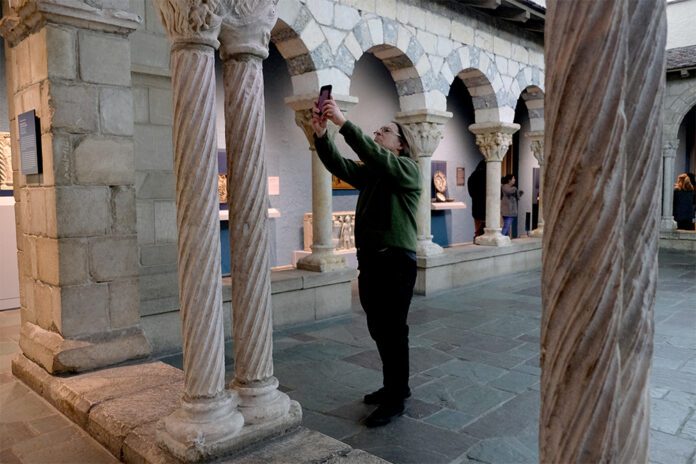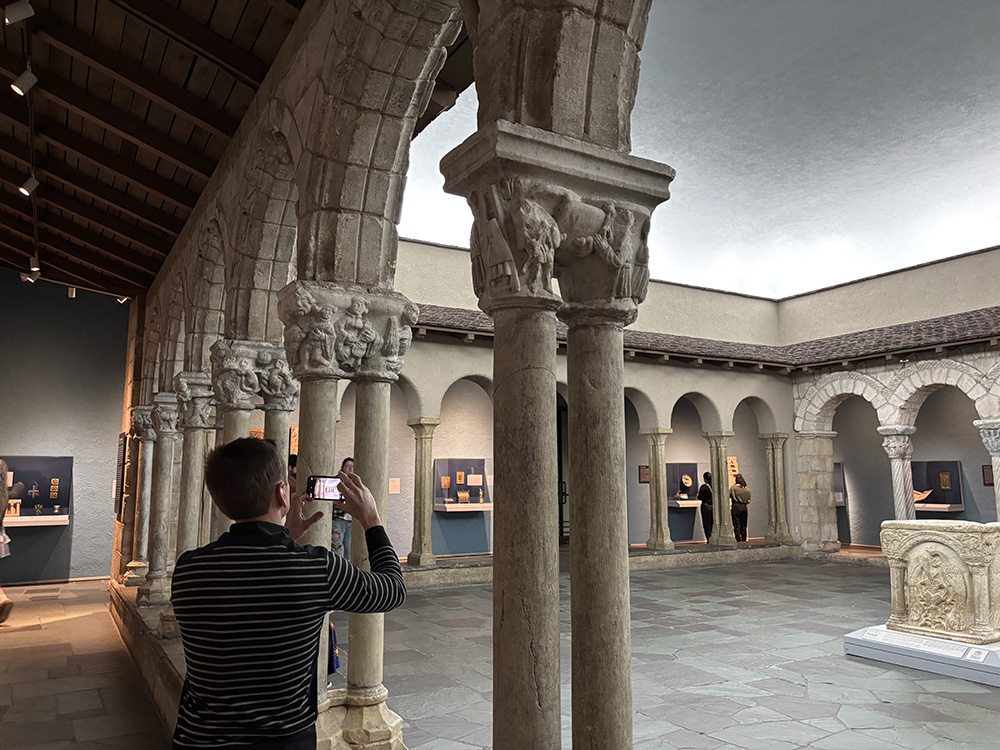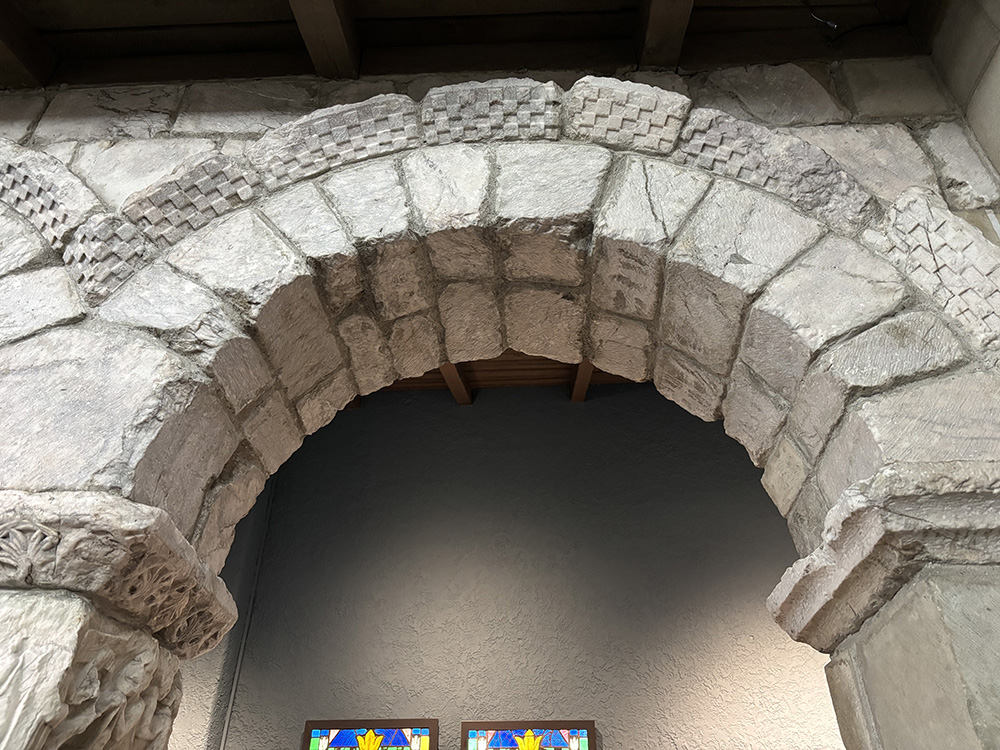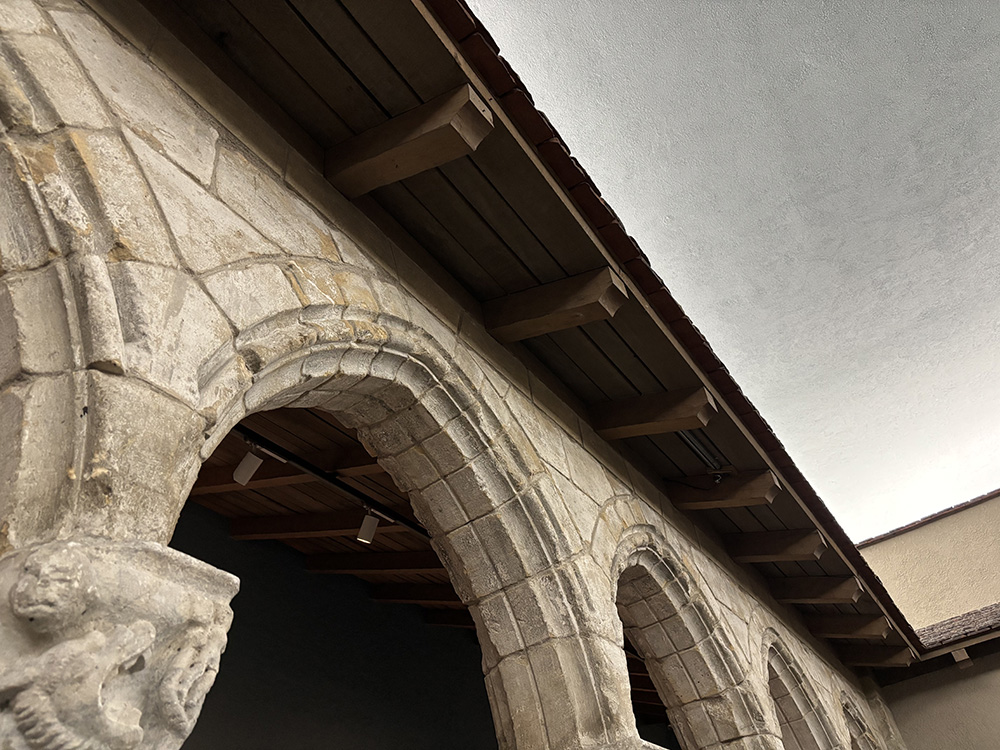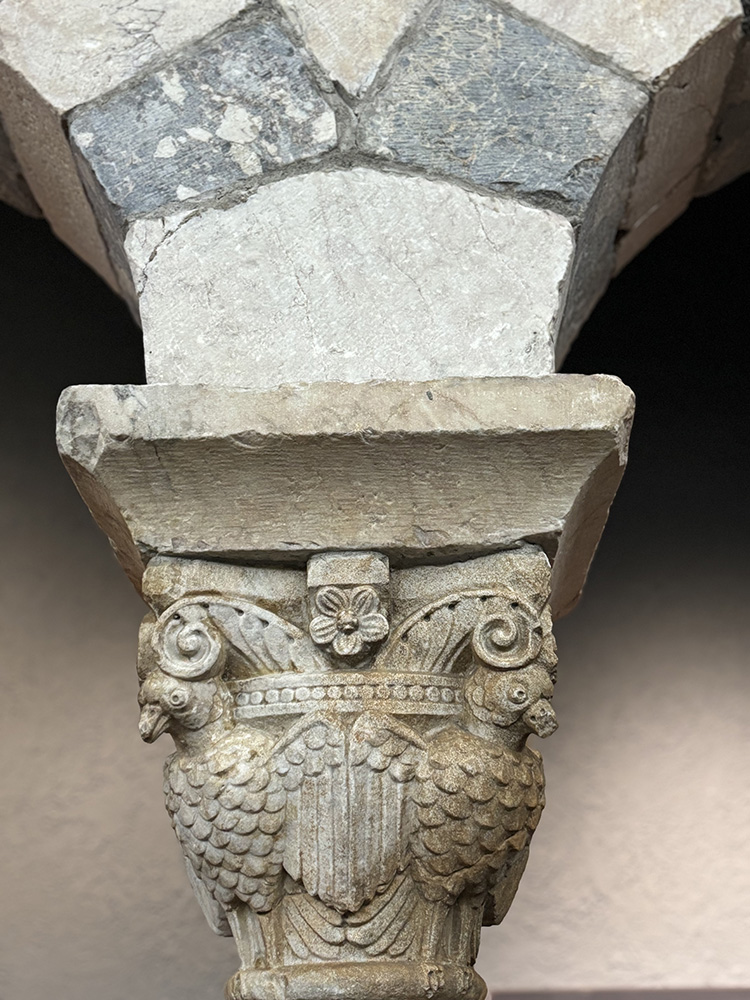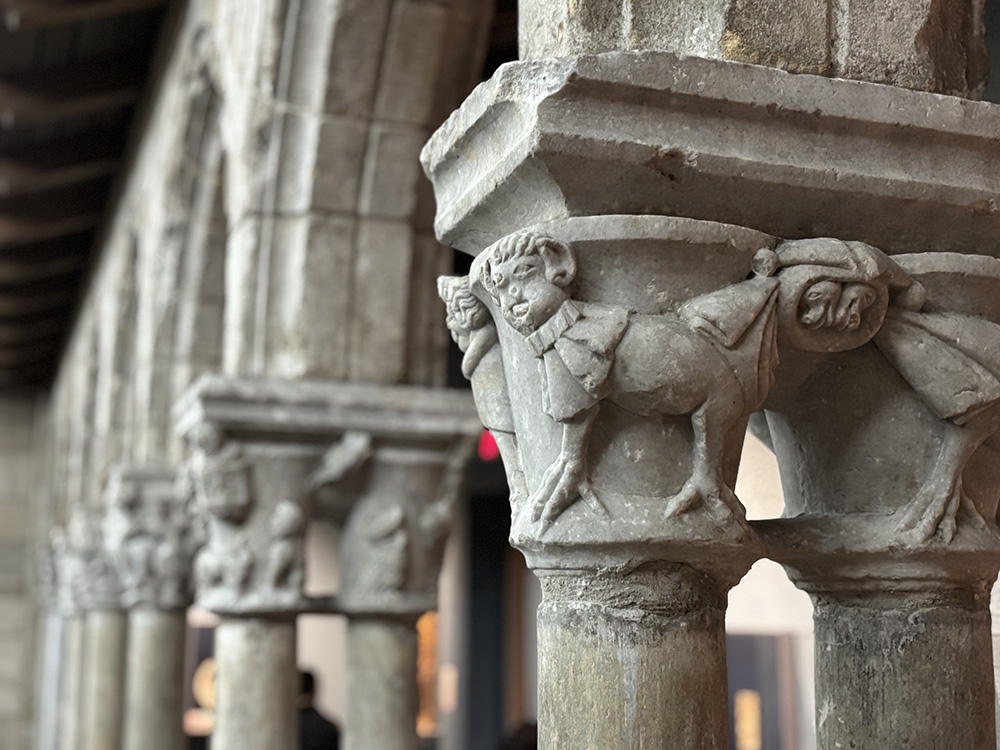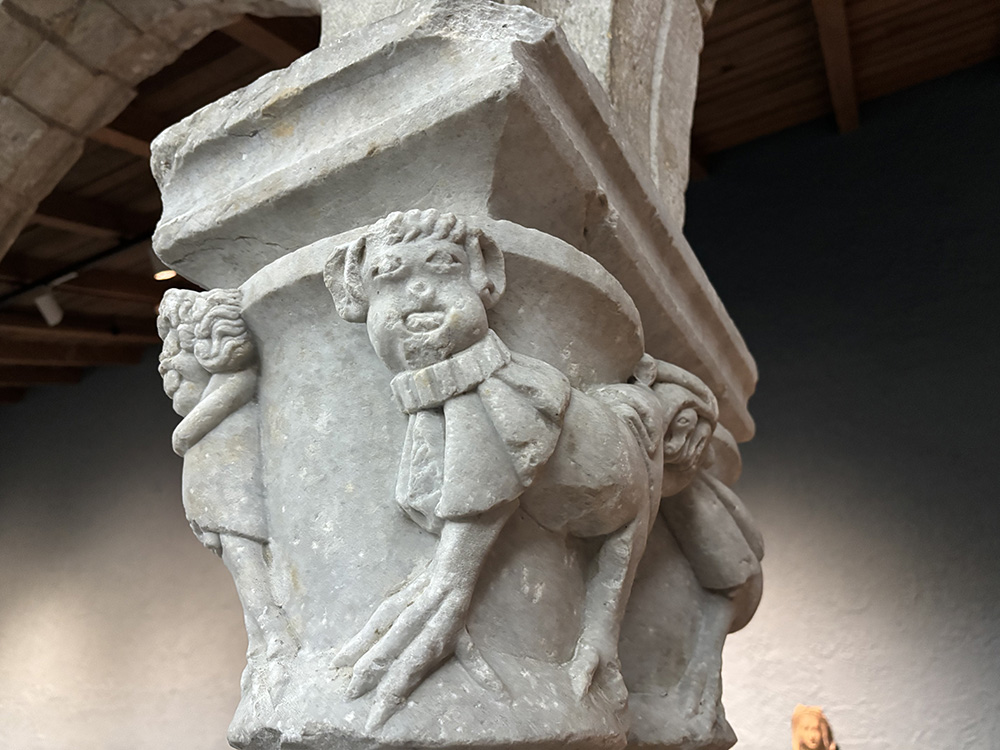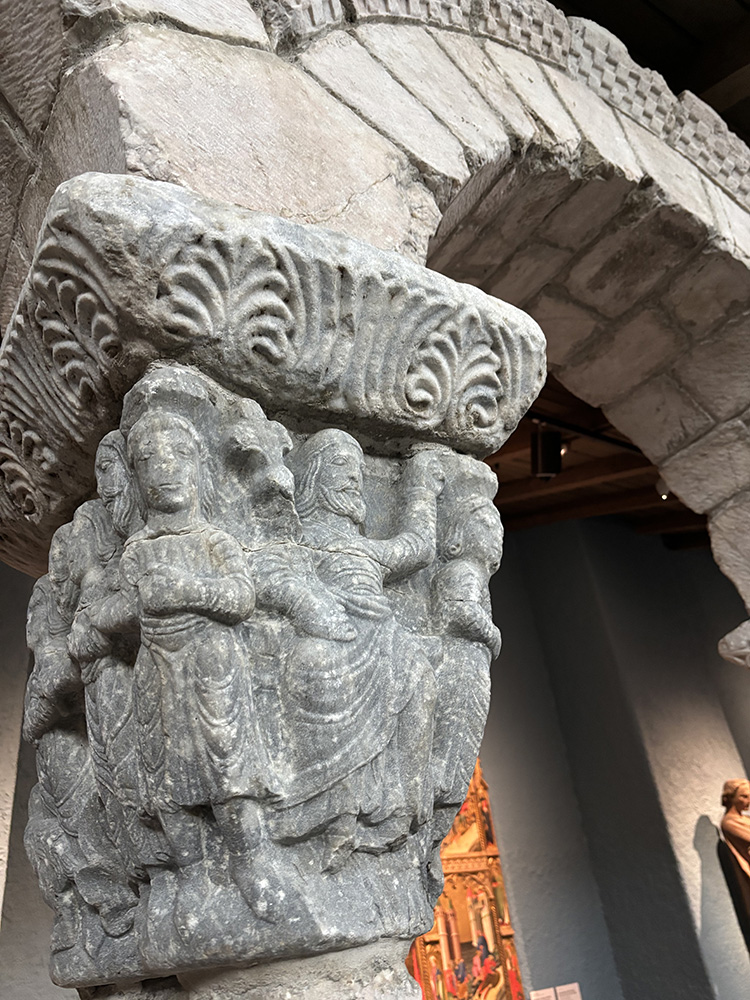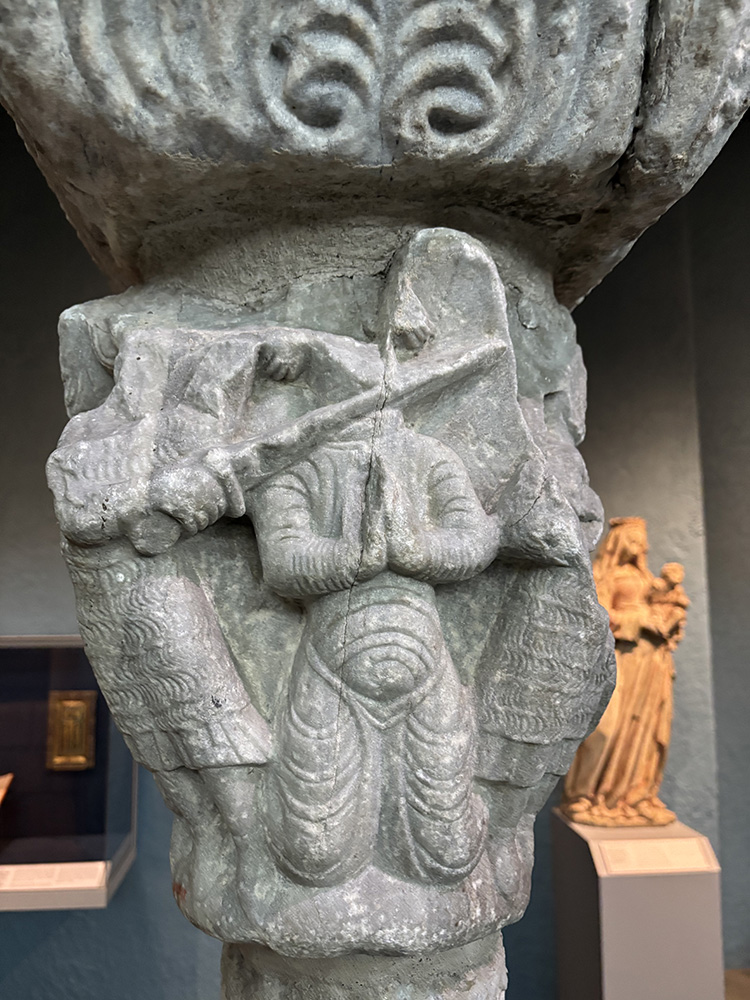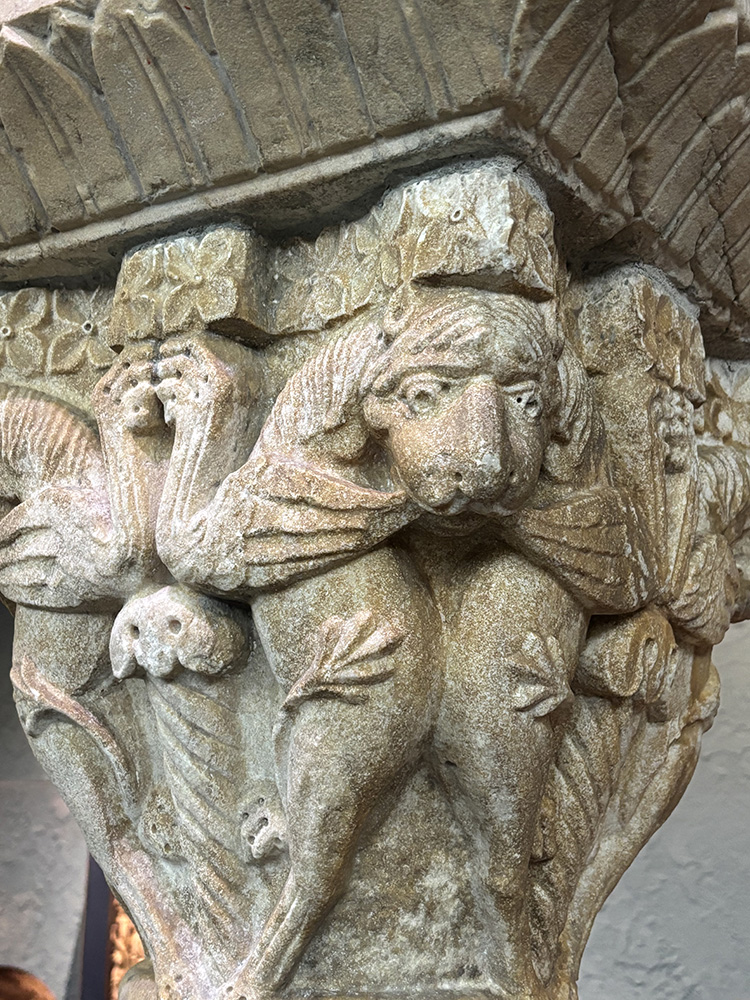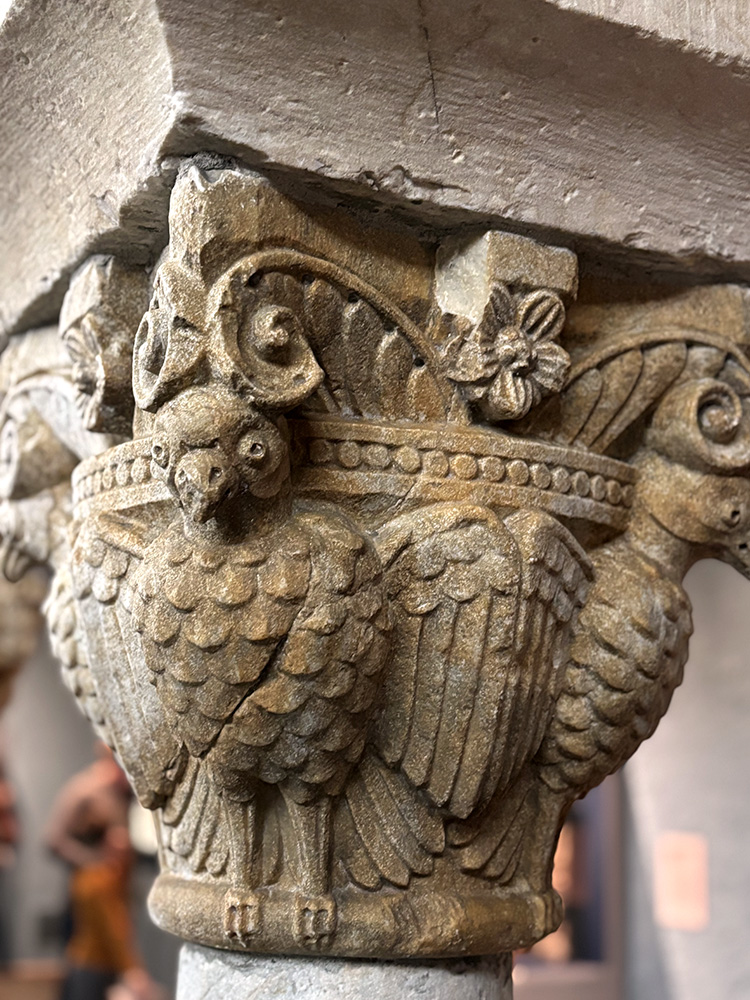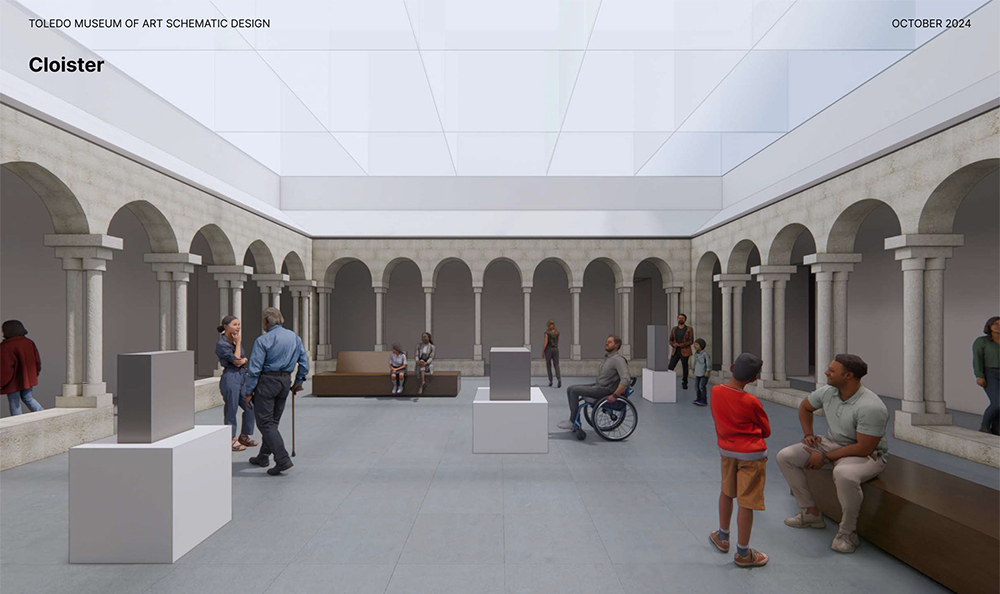TOLEDO – Upon hearing the news that the beloved Cloister Gallery would be going off view for two years, residents flocked to the Toledo Museum of Art in droves last weekend to experience the iconic space before it closed.
TMA made the surprise announcement the morning of Jan. 30 in a social media post on Facebook, Instagram and LinkedIn. The announcement stated Feb. 2 would be the last day to visit the gallery until it reopens in 2027. The Facebook post alone received more than 300 comments, ranging in tone from excitement to concern to outrage.
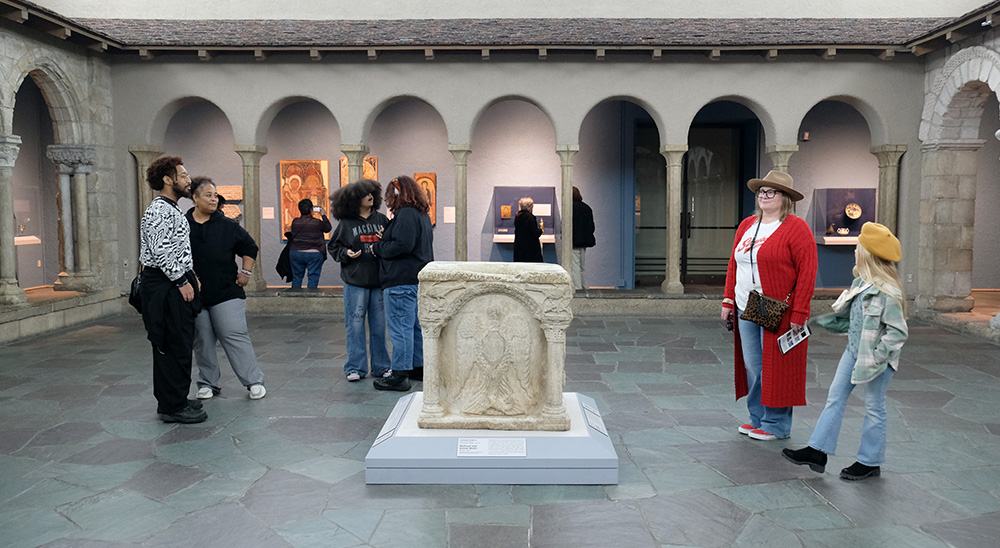
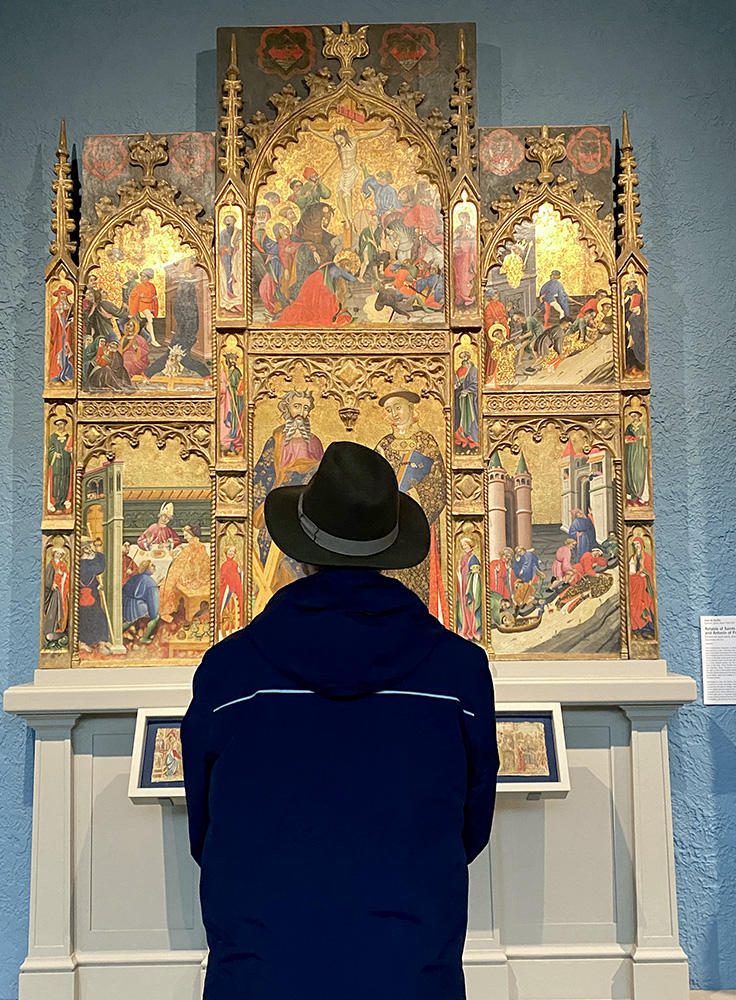
While some shared memories of concerts, wedding proposals and bygone hours spent sketching, reflecting and meditating in the space, others expressed worries about the museum’s commitment to preserving the visitor favorite.
In the final few days, residents of all ages turned out to wander in quiet reverence among the medieval columns. Some examined and photographed the intricate carvings, while others sat in quiet reflection on the worn limestone and marble ledges of the arcades.
JoAnna Studer, a frequent museum visitor who came to the mourn the space with her son, William Zeigler, called the gallery a special spot that shows how architecture evolved over the centuries.
“It was on the to-do list as soon as we read that it was going to be closed for two years,” said Studer, who visited Sunday afternoon. “That’s a long time to go without it.”
Zeigler, 10, said he admires all the beautiful artwork in the gallery, especially the columns, stained glass windows, sculptures, paintings and the roof.
The idea for a gallery designed to resemble the type of open-air courtyard found at the center of a medieval monastery dates to the late 1920s, and The Cloister was a highlight of TMA’s 1933 East and West Wing expansion.
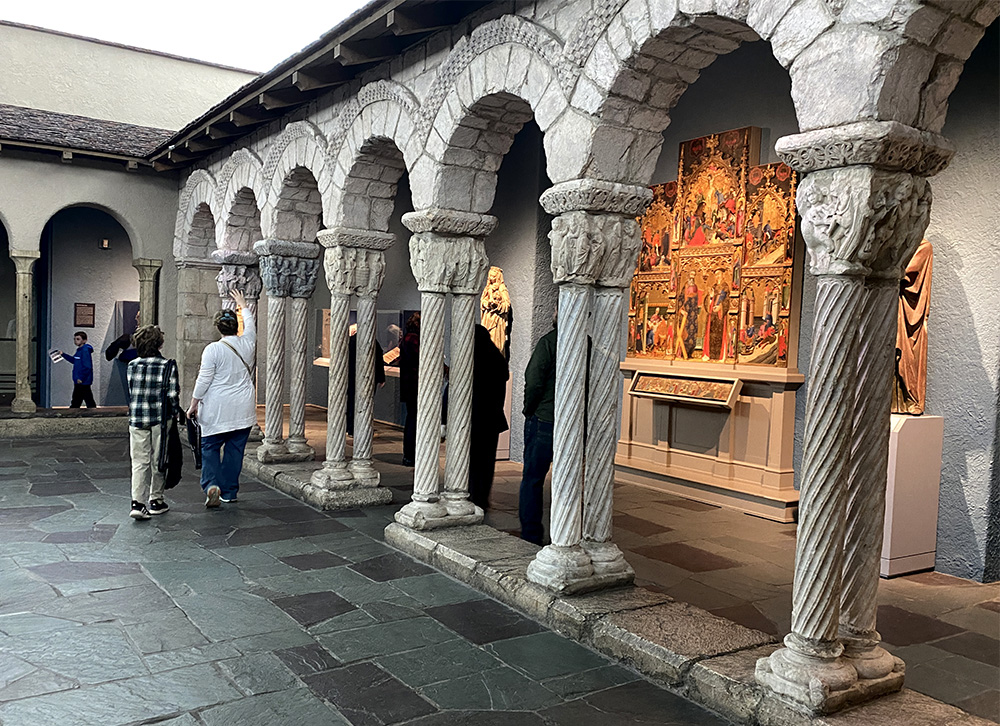
The gallery was a gift of museum co-founder Edward Drummond Libbey. Three of the arcades were assembled from different monasteries in south France: Two from the middle of the twelfth century represent the architecture of the Romanesque era, while one in the Gothic style dates to around the year 1400. Local craftsman constructed a fourth arcade from wood and plaster and covered the Cloister’s surrounding walkways with timber and tile roofs.
The heart of daily life in a Christian monastery or convent, a cloister served as a place for meditation, reading and exercise for the resident monks or nuns. It was also a place of connection, as cloisters typically joined together the principal buildings of a monastic complex.
According to an informational panel displayed in the exhibit.
Adrian Traynum II described The Cloister as “a space of sanctity and community.” A frequent museum visitor since childhood, Traynum squeezed in one last visit to the gallery before he headed to work on Sunday afternoon. “I wanted to be sure I got in here and saw the Cloister before it went down for two years,” he said.
Traynum said the gallery makes visitors feel as though they are taking a step through time.
“It’s like nostalgia for something that we haven’t even fully seen, but as humans I feel like we can resonate with because it feels like it’s just from straight up out of the ancient history,” he said. “They captured a piece of community back when community was way more tight-knit.”
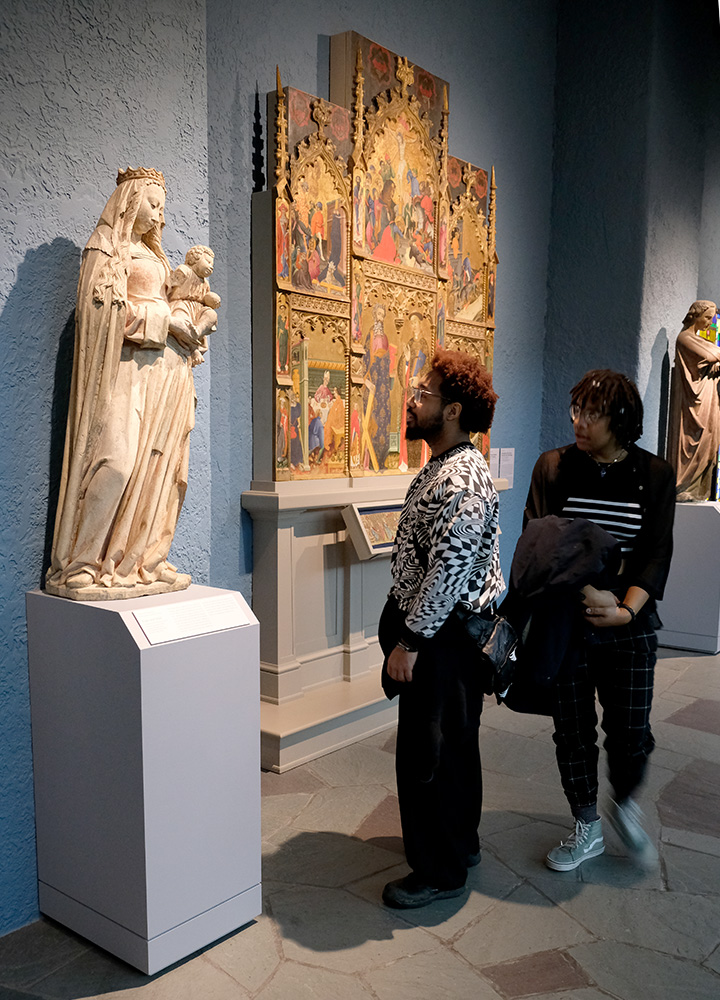
Visiting with his mother and siblings, Traynum marveled in reflecting on how many generations have been able to experience the gallery. “Someone in their 90s could have come here where it first opened,” he said.
Kristi Russell said her mother, Glenda Russell, 85, has been coming to the museum since she was a child. The pair visited Sunday afternoon, and expressed concern about the future of the Cloister and the lack of detailed information from the museum about plans for it.
Glenda Russell said the space represents “serenity” to her.
“It’s not just pictures lined up,” added Kristi Russell. “You can walk into a monastery … and meditate and sit and pray.”
Janice Rogacki echoed the sentiments of those describing The Cloister as a sacred space. She and several other visitors recalled the magic of attending concerts held there in past years.
She was visiting with a friend, Laurel Reed, who said she came to get a few photos to help her remember the gallery as she knows it. “There’s a feeling in The Cloister that’s different than any other room in the entire [museum],” she said.
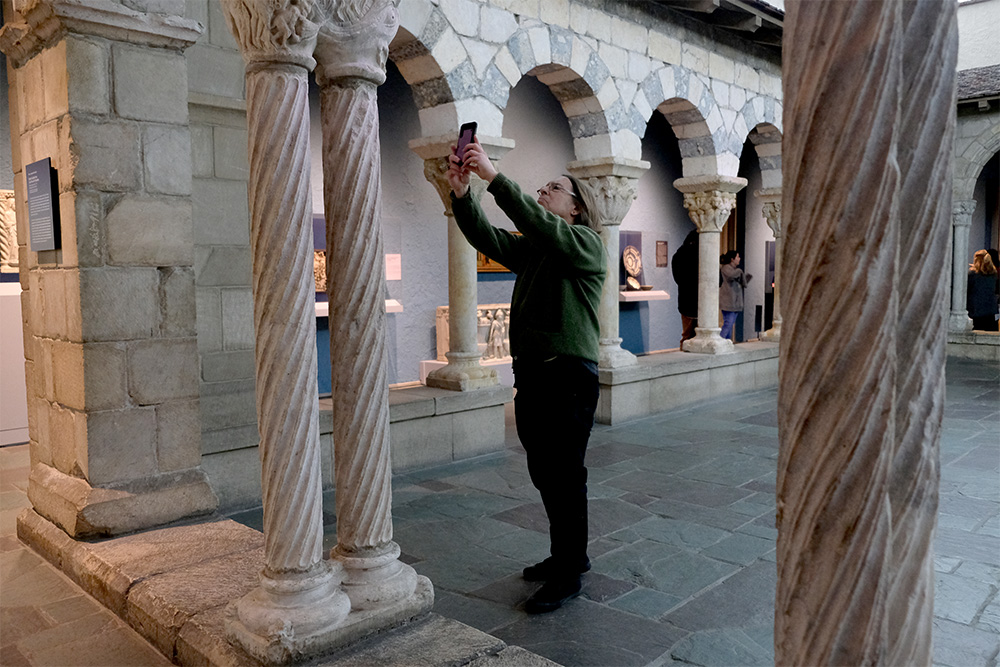
Visiting the museum has been a tradition for her family for decades, since they moved to Toledo when she was 7. “Change is unnerving,” said Reed. “Historically, the museum always gets new shows and the rooms change and the colors change. But this, The Cloister, has been a place that has stayed, even though some of the art has changed.”
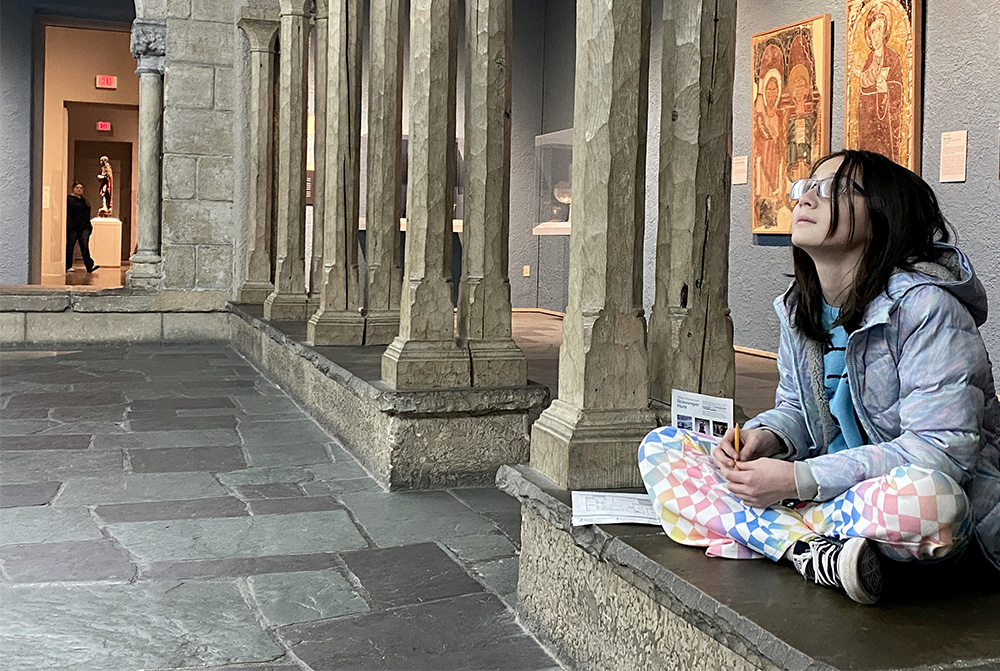
What’s next for The Cloister Gallery?
The biggest two questions on the lips of many visitors included where is it being moved and why. Museum security guards and other employees asked about plans had limited details to share over the weekend.
Penny Gentieu, a Toledo native and photographer who maintains a website about TMA and the region’s historic artists at artistsoftoledo.com, expressed concerns about the risks of moving the fragile columns, capitals and arches of The Cloister in a blog post on her site.
“Changes in temperature, humidity, and lighting at a new location could accelerate the degradation of the stone,” wrote Gentieu. “Moving might expose the artifacts to vibrations, pollutants, or handling-related damage. They will need to maintain climate-controlled storage and moving conditions.”
Doreen Cutway, senior public relations manager for the museum, said moving The Cloister is one part of a major two-year reinstallation project announced in November. Once completed, the entire TMA collection will be presented chronologically from antiquity to present day.
“We know what a gem this particular exhibition is and how important this is to the community, so we are going to take really good care of it and give it a better home than it has now,” said Cutway.
There may be other gallery closures in phases, Cutway said, but the museum’s goal is to keep things on view as much as possible during the process.
In a follow-up email to the Toledo Free Press, a museum spokesperson acknowledged The Cloister was also closed for a period of time in 2021 to be “refreshed.” The email noted the latest closure ties into the broader reinstallation outlined in the museum’s 2021-2026 strategic plan.
The spokesperson wrote that the Cloister is to be dissembled, labeled, stored and reassembled next to Classic Court in the footprint of galleries 3, 4, 5 and 6 by 2027.
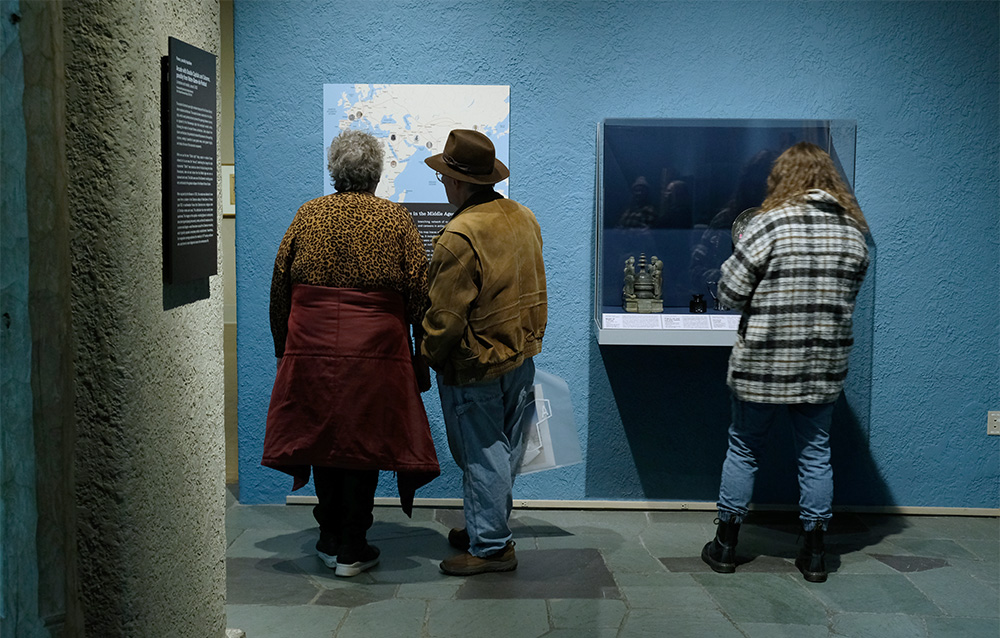
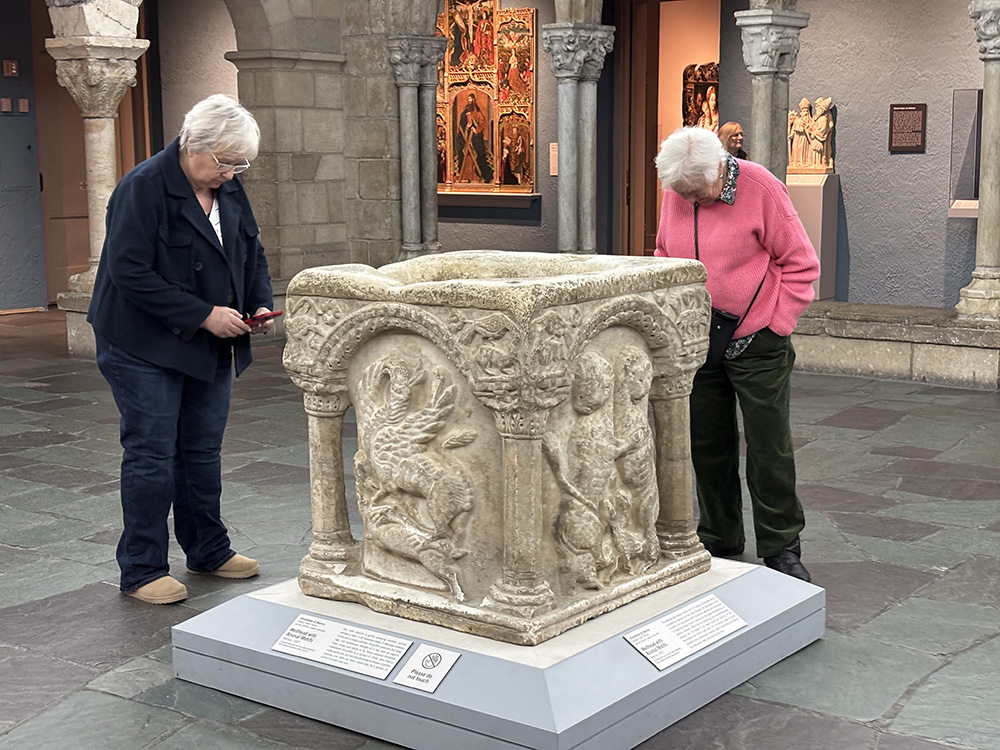
TMA’s conservation team is working closely with its architectural partners, Michael Maltzan Architecture and EverGreene Architectural Arts, to ensure the move is done safely. EverGreene is a leading architectural conservation firm with extensive experience working with cloisters, and TMA’s 2021 project in The Cloister Gallery also helped the conservation team develop considerable expertise on the arcades.
The museum did not provide details about the cost for moving The Cloister. The spokesperson wrote that TMA is privately funded and the project is one small part of the larger reinstallation that is being funded through individual and corporate philanthropy.
TMA recently launched a new website offering an overview of the project, which marks the museum’s first comprehensive gallery reinstallation in more than 40 years.

